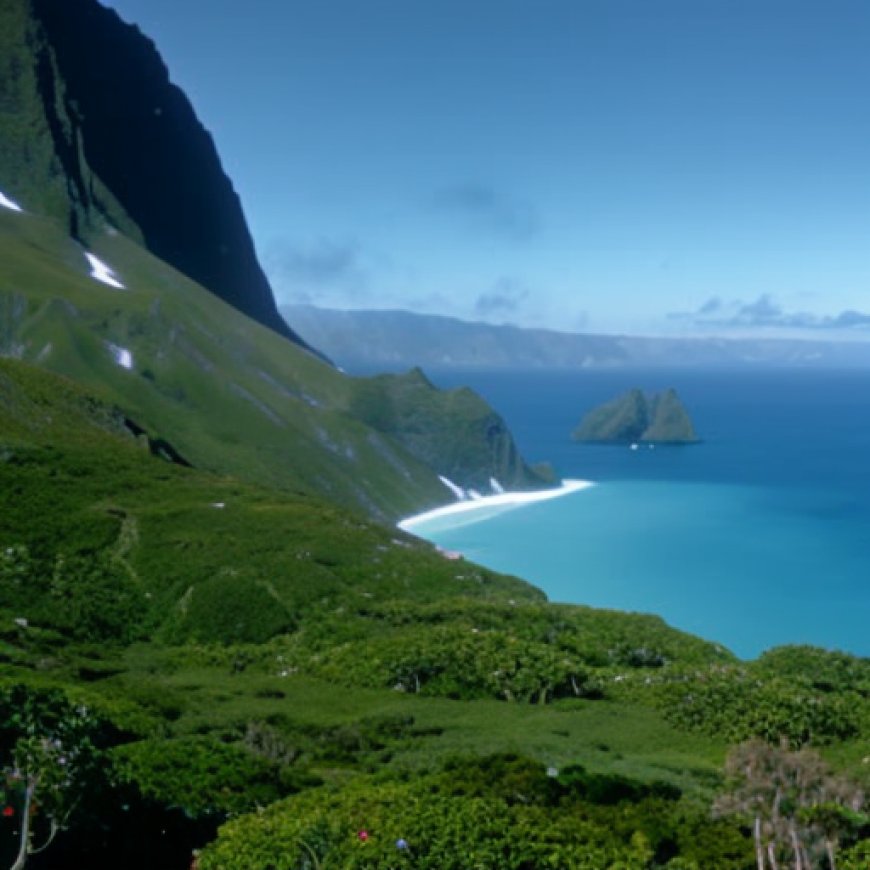Sea level will rise for Pacific Islands even with a greenhouse gas emission reduction, NASA study finds


Sustainable Development Goals (SDGs) and Sea Level Rise in Pacific Island Nations
Pacific Island nations such as Tuvalu, Kiribati, and Fiji will experience at least 20 centimeters of sea level rise in the next 30 years regardless of whether greenhouse gas emissions change in the short term, according to new research from NASA.
The analysis found that the number of high-tide flooding days — otherwise known as nuisance flooding or sunny day flooding (a temporary inundation of low-lying areas, especially streets) — in an average year will increase significantly for nearly all Pacific Island nations by the 2050s.
Tuvaluans preparing for life in Australia
For example, areas of low-lying island Tuvalu that currently see less than five high-tide flood days a year could average 25 flood days annually by the 2050s.
In Kiribati, regions that see fewer than five flood days a year today will experience an average of 65 flood days annually by the 2050s, according to the research.
The NASA Earth Science Division’s ocean physics program director, Dr Nadya Vinogradova Shiffer, said their findings provided a clearer picture of what “flooding frequency and severity look like” over the coming decades.
New projected flooding maps by NASA show areas of Kiribati that will be vulnerable to high tide flooding in the next 30 years.(NASA Earth Observatory)
“Sea level will continue to rise for centuries, causing more frequent flooding,” she said.
The effects of sea level rise differ across the world due to several factors including global and local conditions, the topography of a coastline, and how glacial meltwater is distributed in the ocean.
King tides damaged roads near the coast in Funafuti, Tuvalu.(Supplied: Tuvalu Meteorological Service)
However, Pacific Island nations face more dire circumstances compared to the rest of the world.
“We’re always focused on the differences in sea level rise from one region to another, but in the Pacific, the numbers are surprisingly consistent,” said Ben Hamlington, a sea level researcher at NASA’s Jet Propulsion Laboratory in California and the agency’s sea level change science team lead.
Airports at risk of regular flooding
NASA’s research found that impacts of a 20-centimeter rise in sea level will also vary from country to country in the Pacific Islands.
For instance, some nations might face frequent neighborhood flooding equivalent to being inundated for nearly half the year.
Others could experience nuisance flooding several times a year at their airport.
Tuvalu along with other Pacific Island nations is expected to experience high tide flooding in certain areas due to rising sea levels, according to the latest NASA research.(NASA Earth Observatory)
The agency’s sea level team released high-resolution maps this week showing which areas of different Pacific Island nations will be vulnerable to high-tide flooding.
The maps outline flooding potential in a range of emissions scenarios, from best-case to business-as-usual to worst-case.
Researchers at several universities including the University of Hawaii and Virginia Tech, started with flood maps of Kiribati, Tuvalu, Fiji, Nauru, and Niue.
A king tide inundates a home on Funafuti, in Tuvalu, in February.(Supplied: Tuvalu Meteorological Service)
They plan to build high-resolution maps for other Pacific Island nations in the near future, aimed at supporting mitigation efforts.
Researchers said their aim to combine satellite data on ocean levels with ground-based measurements of sea levels at specific points is hindered.
“There’s a real lack of on-the-ground data in these [Pacific Island] countries,” Mr. Hamlington said.
NASA’s research was conducted at the request of several Pacific Island nations, including Tuvalu and Kiribati, and in coordination with the US State Department.
While scientists say rising sea levels will bring significant impacts to Pacific Island nations, some research has shown hundreds of islands in the Pacific are growing in land size due to sediment, corals, and other debris being washed ashore.
SDGs, Targets, and Indicators
1. Which SDGs are addressed or connected to the issues highlighted in the article?
- SDG 13: Climate Action
- SDG 11: Sustainable Cities and Communities
- SDG 9: Industry, Innovation, and Infrastructure
2. What specific targets under those SDGs can be identified based on the article’s content?
- SDG 13.1: Strengthen resilience and adaptive capacity to climate-related hazards and natural disasters
- SDG 11.5: By 2030, significantly reduce the number of deaths and the number of people affected and substantially decrease the direct economic losses relative to global gross domestic product caused by disasters, including water-related disasters, with a focus on protecting the poor and people in vulnerable situations
- SDG 9.1: Develop quality, reliable, sustainable and resilient infrastructure, including regional and transborder infrastructure, to support economic development and human well-being, with a focus on affordable and equitable access for all
3. Are there any indicators mentioned or implied in the article that can be used to measure progress towards the identified targets?
- Number of high-tide flooding days
- Frequency and severity of flooding
- Extent of airport flooding
Table: SDGs, Targets, and Indicators
| SDGs | Targets | Indicators |
|---|---|---|
| SDG 13: Climate Action | SDG 13.1: Strengthen resilience and adaptive capacity to climate-related hazards and natural disasters | Number of high-tide flooding days |
| SDG 11: Sustainable Cities and Communities | SDG 11.5: By 2030, significantly reduce the number of deaths and the number of people affected and substantially decrease the direct economic losses relative to global gross domestic product caused by disasters, including water-related disasters, with a focus on protecting the poor and people in vulnerable situations | Frequency and severity of flooding |
| SDG 9.1: Develop quality, reliable, sustainable and resilient infrastructure, including regional and transborder infrastructure, to support economic development and human well-being, with a focus on affordable and equitable access for all | Extent of airport flooding |
Source: abc.net.au








